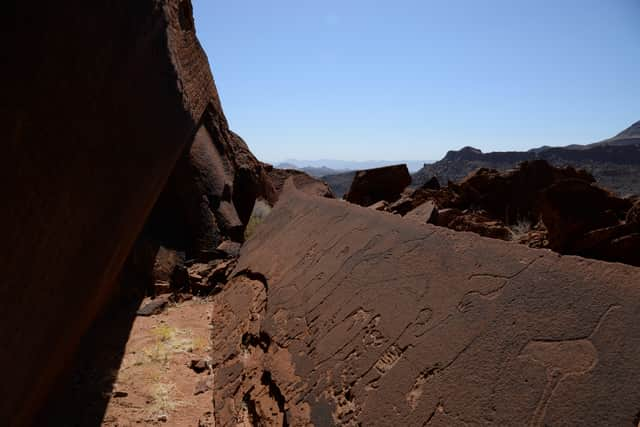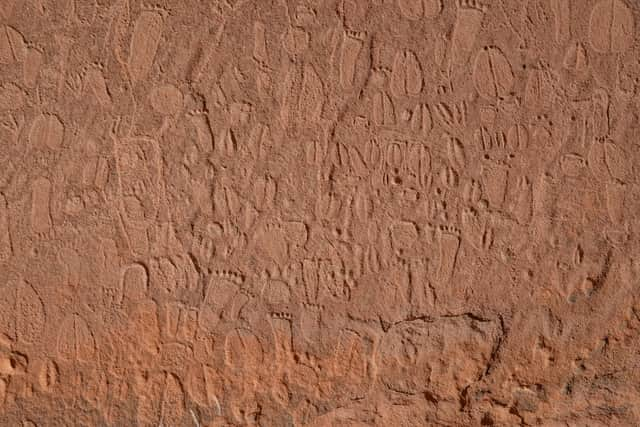50,000-year-old carvings are so detailed present-day locals can identify species, sex and age of depictions


Carvings that date back to more than 50,000 years ago are so detailed that local people today can identify the species, sex, and age of most depictions in the area.
Around 90 percent of these engravings from the later Stone Age to 50,000 years ago can be identified, including which leg of an animal is being depicted.
Advertisement
Hide AdAdvertisement
Hide AdThe rock carvings are found in Namibia in the south of Africa where a team of scientists showed the carvings including human and animal prints to indigenous trackers.
Study leader Dr Andreas Pastoors, of the University of Erlangen–Nuremberg in Germany, said: “Namibia's rock faces contain numerous Stone Age depictions of animals and humans, as well as human footprints and animal tracks.
"Until now, the latter has received little attention because researchers lacked the knowledge to interpret them."
German archaeologists together with indigenous trackers from the Nyae Nyae Conservancy in Namibia examined hundreds of the tracks in more detail and discovered surprising details.
Advertisement
Hide AdAdvertisement
Hide Ad

Dr Pastoors said: "The tracks cover a wider range of animal species than in conventional animal depictions and differentiated cultural patterns emerge in the representation of the various species.
”Engravings of animal tracks and human footprints appear in numerous traditions of prehistoric rock art around the world.
"Namibia is especially rich in hunter-gatherer rock art from the Later Stone Age with many well-executed engravings of animal and human tracks.
"Most research into prehistoric rock art has grouped these engravings with geometric shapes, however, leaving them badly under-researched despite being common throughout the world."
Advertisement
Hide AdAdvertisement
Hide AdThe research team recruited the help of Indigenous tracking experts from the Kalahari desert to analyse animal and human footprints in rock art in the Doro Nawas Mountains in central Western Namibia.
Dr Pastoors said: "The experts were able to define the species, sex, age group and even the exact leg of the animal or human print in more than 90 per cent of the 513 engravings they analysed.
"Their work showed the rock art had much more diversity in the animals represented by tracks than the engravings of the animals themselves."
He added: "Engravers also showed a clear preference for certain species and were more likely to depict adult animals than juveniles, and male footprints compared to female footprints."
Advertisement
Hide AdAdvertisement
Hide AdDr Pastoors says the new findings, published in the journal PLOS One reveal patterns that likely arise from culturally determined preferences - but the meaning of the patterns is still unknown.
The researchers propose that consulting with present-day indigenous experts may shed some light on the mystery.
They say that while indigenous knowledge has "tremendous capacity" to advance archaeological research, in this situation, the precise meaning and context of the rock art will likely remain elusive.
Comment Guidelines
National World encourages reader discussion on our stories. User feedback, insights and back-and-forth exchanges add a rich layer of context to reporting. Please review our Community Guidelines before commenting.
